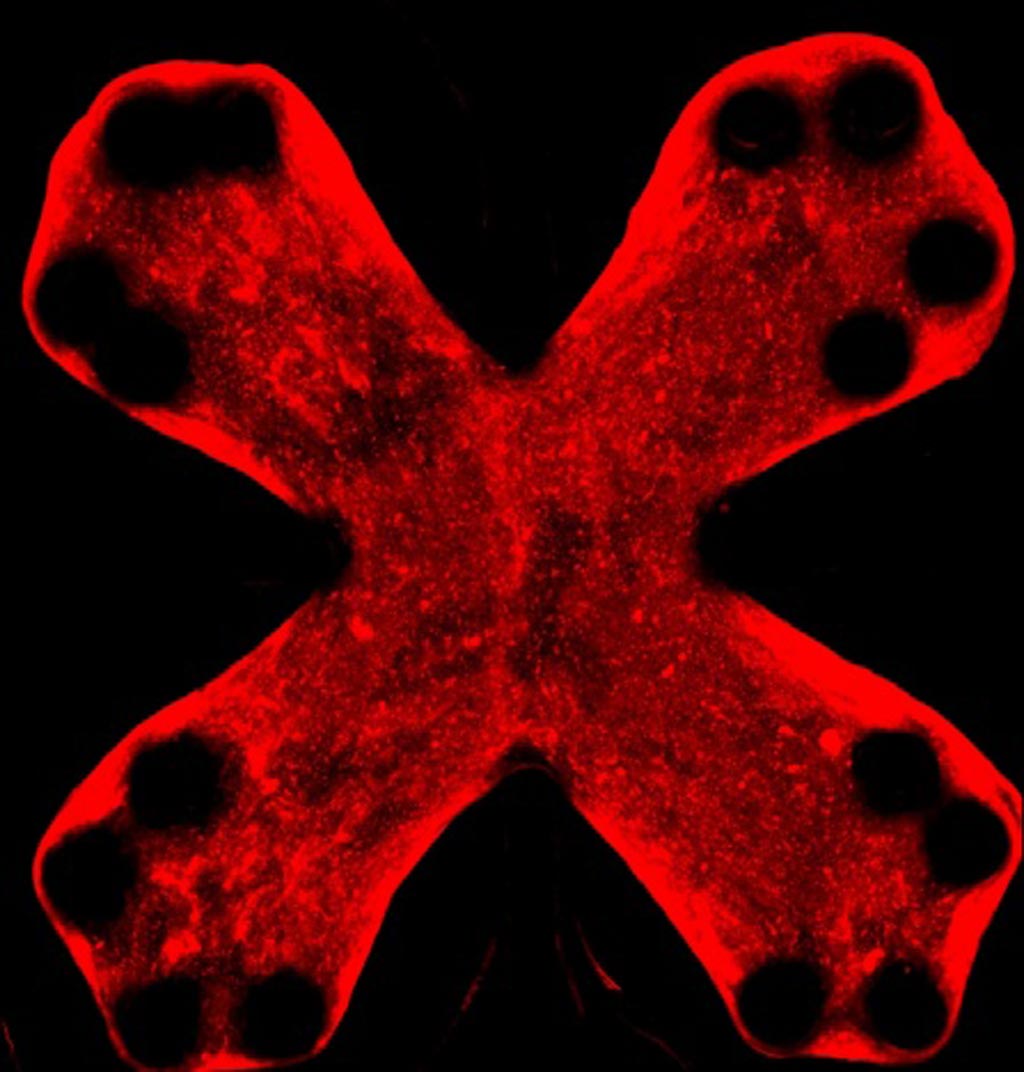In Vitro System Developed for Studying Lung Fibrosis
By LabMedica International staff writers
Posted on 06 Jun 2018
A novel lung-on-a-chip device was tested in a proof-of-principle study with results suggesting that this technology could be used to evaluate a variety of potential treatments for lung fibrosis.Posted on 06 Jun 2018
Fibrosis is a severe health problem characterized by progressive stiffening of tissues, which causes organ malfunction and failure. A major bottleneck in developing new anti-fibrosis therapies is the lack of in vitro models that recapitulate dynamic changes in tissue mechanics during fibrogenesis.

Image: Collagen from a healthy engineered lung tissue (Photo courtesy of Dr. Ruogang Zhao).
To help overcome the lack of in vitro model systems for fibrosis, investigators at the University at Buffalo (NY, USA) created membranous human lung microtissues to model key biomechanical events occurred during lung fibrogenesis.
The investigators used microlithography to print microscale pillars of silicon-based organic polymer onto flexible plastic chips. Lung tissue cultured on top of the pillars behaved like functional alveoli. Fibrosis was induced by introducing a protein that caused healthy lung cells to become diseased, leading to the contraction and stiffening of the lung tissue.
The investigators reported in the May 25, 2018, online edition of the journal Nature Communications that by demonstrating these capabilities they had provided proof-of-principle evidence for using this fibrotic tissue array for multi-parameter, phenotypic analysis of the therapeutic efficacy of two anti-fibrosis drugs recently approved by the [U.S.] Food and Drug Administration. The test system confirmed that treatment with either Pirfenidone or Nintedanib reduced tissue contractility and prevented tissue stiffening and decline in tissue compliance.
"Obviously it is not an entire lung, but the technology can mimic the damaging effects of lung fibrosis. Ultimately, it could change how we test new drugs, making the process quicker and less expensive," said senior author Dr. Ruogang Zhao, assistant professor of biomedical engineering at the University at Buffalo.
Related Links:
University at Buffalo













